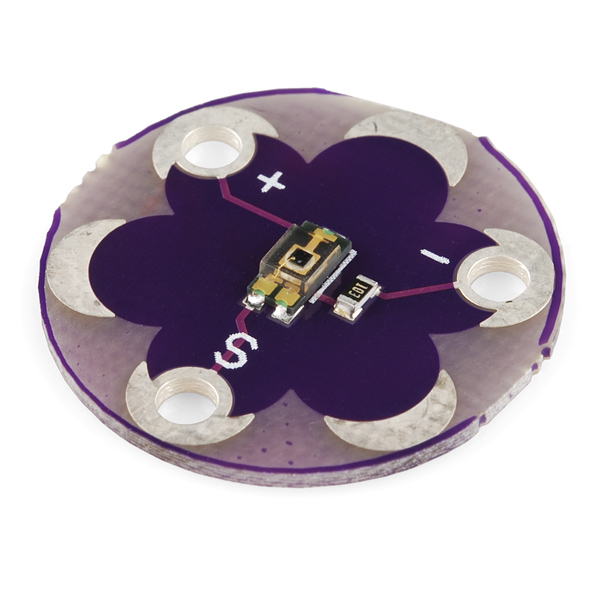LilyPad Light Sensor Hookup Guide
Introduction
The LilyPad Light Sensor is an e-textile friendly version of the Ambient Light Sensor Breakout. If you've used the breakout in a project before, the hookup and code will be very similar. You will need to connect to a LilyPad Arduino or other microcontroller to read the sensor values and use in your code.
This sensor outputs an analog value from 0 to 3.3V. In bright light (full daylight) this sensor will output 3.3V, and if completely covered will output 0V. In a typical indoor lighting situation, the sensor will output from around 1 to 2V.
LilyPad Light Sensor
DEV-08464To follow along with the code examples, we recommend:
Suggested Reading
To add this sensor to a project, you should be comfortable sewing with conductive thread and uploading code to your LilyPad Arduino. Here are some tutorials to review before working with this sensor:
What is a Circuit?
Light
Insulation Techniques for e-Textiles
LilyPad Basics: E-Sewing
Getting Started with LilyPad
If you have not used the TEMT6000 light sensor before, we recommend checking out the TEMT6000 Hookup Guide for basic information regarding that sensor.
